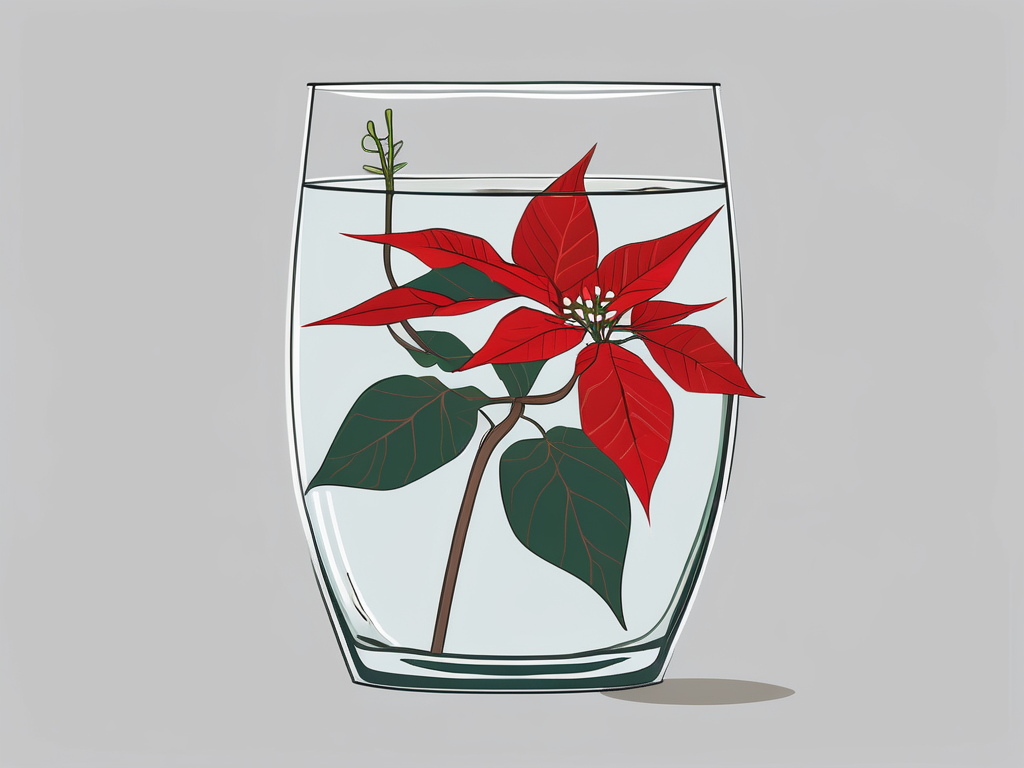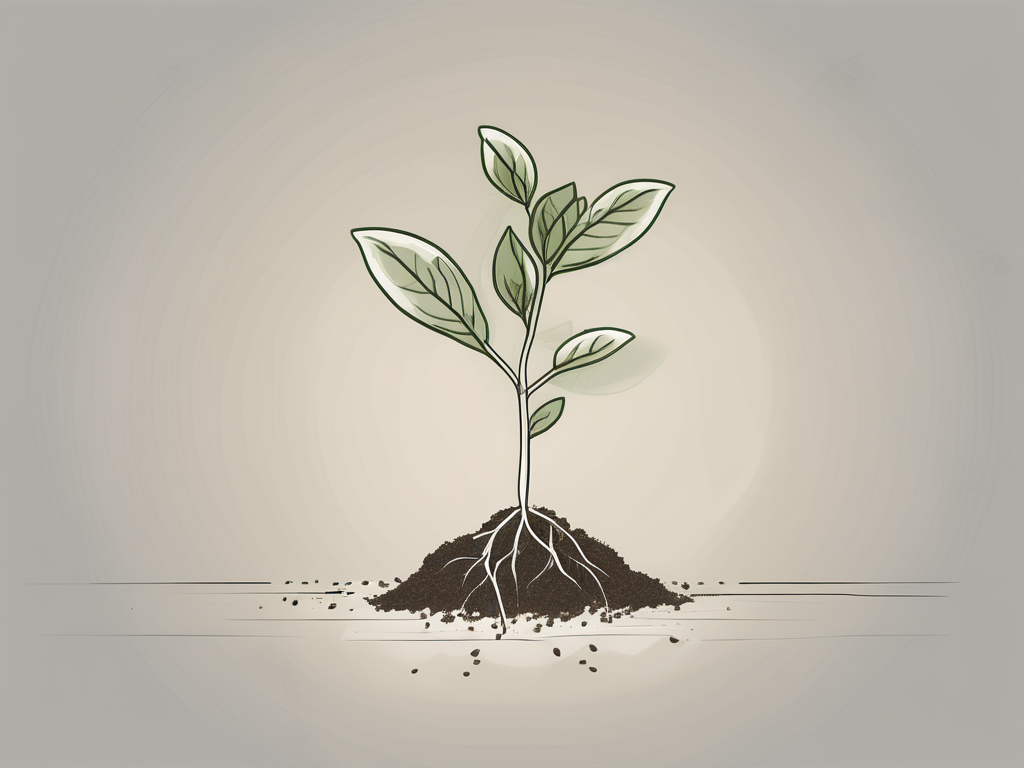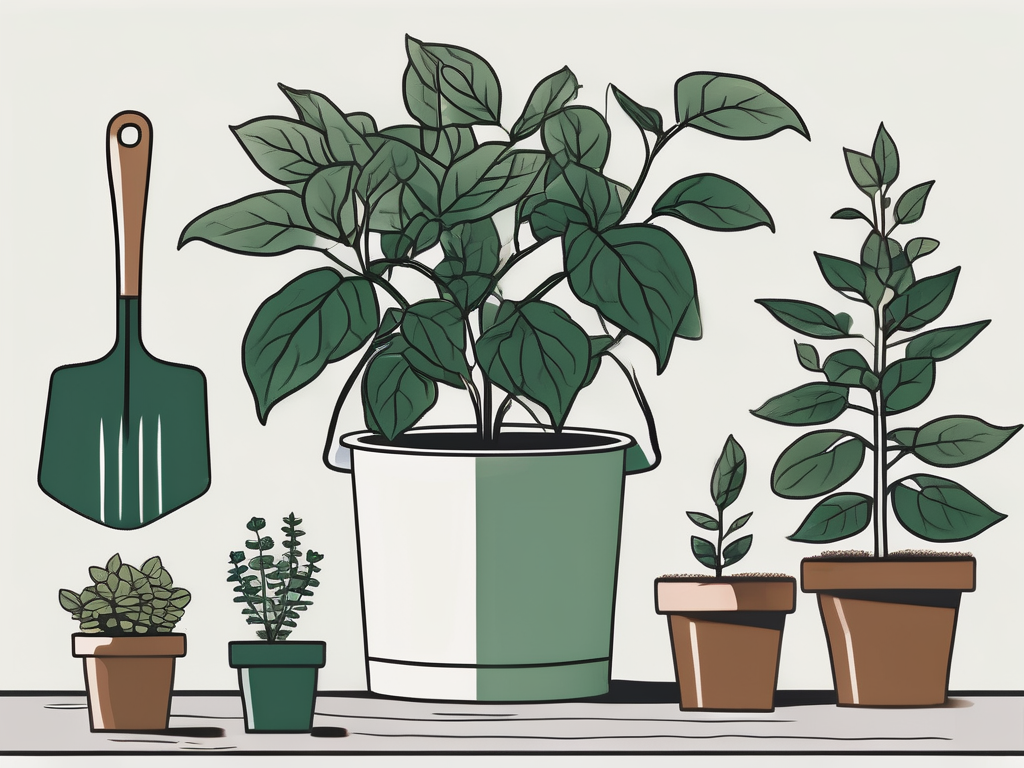
If you're a plant lover looking to expand your collection or simply want to try your hand at propagating poinsettias, you're in the right place! In this guide, we'll explore the fascinating world of propagating poinsettia in water. From understanding the poinsettia plant itself to the step-by-step process of water propagation, we'll cover everything you need to know to successfully propagate and care for your own poinsettias.
Understanding the Poinsettia Plant
Before we delve into the propagation process, let's take a moment to understand the poinsettia plant. Poinsettias, also known by their botanical name Euphorbia pulcherrima, are native to Mexico and have become synonymous with the holiday season. These beautiful plants boast vibrant red, white, or pink flowers, surrounded by colorful bracts. But do you know the origin and history of poinsettias?
The Origin and History of Poinsettias
Poinsettias have a rich history dating back to ancient Aztec civilizations. The Aztecs used the sap from the poinsettia plant to produce red dye for textiles and cosmetics. This vibrant red dye was highly prized and symbolized purity and celebration. The Aztecs also believed that the plant's red color represented the blood of sacrifices made to their gods.
Fast forward to the 19th century, and the poinsettia caught the eye of Joel Poinsett, the United States Ambassador to Mexico. Poinsett was an avid botanist and was captivated by the plant's beauty. He brought several plants back to the United States, introducing them to horticultural enthusiasts and botanical gardens. In honor of Poinsett's efforts, the plant was named after him, and its popularity grew rapidly.
Since then, poinsettias have become a beloved holiday plant, adorning homes, offices, and public spaces during the festive season. They are often associated with Christmas due to their vibrant red color, which symbolizes love and joy. However, poinsettias also come in other colors, such as white and pink, offering a variety of options for holiday decorations.
The Biological Makeup of Poinsettias
Now that we know a bit about the history, let's dive into the biological makeup of poinsettias. Poinsettias belong to the Euphorbiaceae family, which includes a diverse range of plants. Within this family, poinsettias are part of the Euphorbia genus, which comprises over 2,000 species.
Poinsettias are perennial plants in their natural habitat, meaning they can live for several years under the right conditions. In the wild, they can grow up to 10 feet tall, forming large, bushy shrubs. The plant's leaves are green and elongated, with a pointed tip. They have a unique texture, similar to that of succulent plants, due to their ability to store water.
One interesting feature of poinsettias is their flowers, which are actually small and inconspicuous. The vibrant colors that we associate with poinsettias are not the flowers themselves but specialized leaves called bracts. These bracts are modified leaves that surround the flowers and serve to attract pollinators. The actual flowers are small and yellow, located at the center of the bracts.
Poinsettias require specific conditions to thrive, including well-draining soil, ample sunlight, and moderate temperatures. They are sensitive to cold temperatures and frost, which can damage or kill the plant. However, with proper care and attention, poinsettias can be enjoyed as indoor or outdoor plants, adding a touch of festive cheer to any environment.
The Basics of Plant Propagation
Plant propagation is the process of creating new plants from existing ones. It's a rewarding and cost-effective way to expand your garden and share your favorite plants with friends and family. By understanding the different methods of plant propagation, you can easily propagate a wide variety of plants and enjoy the satisfaction of watching them grow and thrive.
So, what exactly is plant propagation, and how does it work? Plant propagation involves replicating plants through various methods, such as seeds, cuttings, grafting, or division. Each method has its pros and cons, but today, we'll focus on propagating poinsettias through cuttings.
What is Plant Propagation?
Plant propagation is the art and science of creating new plants from existing ones. It allows you to reproduce your favorite plants and expand your garden without having to spend a fortune on buying new plants. Whether you're a seasoned gardener or just starting out, plant propagation is a skill worth mastering.
When it comes to propagating plants, there are several methods you can choose from. Seeds, cuttings, grafting, and division are some of the most common techniques used by gardeners. Each method has its own set of advantages and disadvantages, and the choice depends on the type of plant you want to propagate and your personal preferences.
Different Methods of Plant Propagation
While there are different methods of plant propagation, water propagation has gained popularity due to its simplicity and high success rate. This method involves placing plant cuttings in water until roots develop. It's a great choice for propagating poinsettias, a popular plant known for its vibrant red bracts that resemble flowers.
Water propagation is a simple yet effective way to propagate poinsettias. To get started, you'll need a healthy poinsettia plant and a sharp pair of pruning shears. Select a stem that is about 4-6 inches long and has at least two sets of leaves. Make a clean cut just below a leaf node, ensuring that the cutting is free from any diseases or pests.
Once you have your cutting, remove the lower leaves, leaving only a few at the top. This will prevent the leaves from rotting in the water. Fill a glass or jar with clean water and place the cutting in it, making sure that the bottom end is submerged. Place the glass in a bright location, but away from direct sunlight.
Over the next few weeks, you'll start to see roots forming at the base of the cutting. Once the roots are about an inch long, you can transfer the cutting to a pot filled with well-draining potting soil. Keep the soil moist but not waterlogged, and place the pot in a warm and bright location.
With proper care and attention, your poinsettia cutting will continue to grow and develop into a healthy plant. It's important to note that not all cuttings will successfully root, but with practice and patience, you'll improve your success rate.
So, whether you're looking to expand your garden or share your favorite plants with loved ones, plant propagation is a valuable skill to have. By understanding the different methods and techniques, you can propagate a wide variety of plants and enjoy the beauty and satisfaction of watching them thrive.
Why Propagate Poinsettia in Water?
Now that we understand the basics of plant propagation, let's uncover why water propagation is an excellent option for propagating poinsettias.
Benefits of Water Propagation
One of the key benefits of water propagation is the visibility it offers. By placing your poinsettia cuttings in water, you can easily monitor root growth, ensuring a successful propagation process. Additionally, water provides the necessary hydration for the developing roots, promoting healthier growth.
Potential Challenges and Solutions
While water propagation is relatively straightforward, it's not without its challenges. One common issue is the risk of root rot if the cuttings are left in water for too long. To prevent this, it's essential to change the water regularly and provide adequate airflow. We'll explore these solutions and more in the step-by-step guide.
Step-by-Step Guide to Propagating Poinsettia in Water
Now that we've covered the groundwork, let's get into the nitty-gritty of propagating poinsettia in water. Here's a step-by-step guide to help you successfully propagate your poinsettias.
Preparing Your Poinsettia Cuttings
The first step in water propagation is to gather healthy poinsettia cuttings. Look for stems with multiple nodes, as this is where the roots will develop. Cut the stems to around 4-6 inches in length, ensuring each cutting has at least two sets of leaves. Remove the lower leaves, leaving only the top set intact.
The Water Propagation Process
Once you have your cuttings ready, it's time to start the water propagation process. Fill a clean glass or jar with room temperature water and place the cuttings in, ensuring that at least one node is submerged. Position the glass in a well-lit area, but avoid direct sunlight as it can cause excessive heat. Change the water every few days to keep it fresh and oxygenated.
Transplanting Your Poinsettia
After a few weeks, you should start seeing roots develop on your poinsettia cuttings. Once the roots reach around 1-2 inches in length, it's time to transplant them into a well-draining potting mix. Gently remove the cuttings from the water, being careful not to damage the fragile roots. Plant the cuttings in pots filled with moist soil, ensuring the nodes remain covered. Place the pots in a warm, well-lit area, and keep the soil consistently moist until the poinsettias establish themselves.
Caring for Your Propagated Poinsettia
Now that you've successfully propagated your poinsettias, it's crucial to provide them with the care they need to thrive.
Ideal Conditions for Poinsettia Growth
Poinsettias thrive in warm environments with temperatures between 60-70°F during the day and slightly cooler temperatures at night. They prefer bright, indirect light, making them ideal for placement near windows. Additionally, ensure the soil is well-draining and water your poinsettias when the top inch of soil feels dry.
Common Pests and Diseases
Like any plant, poinsettias can face challenges in the form of pests and diseases. Common pests include whiteflies, aphids, and spider mites. Regularly inspect your plants for any signs of infestation and treat them accordingly. Additionally, watch out for diseases such as powdery mildew or root rot. Providing proper airflow and avoiding overwatering can help prevent these issues.
With these tips in mind, you're well on your way to becoming a successful poinsettia propagator. Remember to enjoy the process and have fun experimenting with propagating poinsettias in water. Before you know it, you'll have a beautiful collection of these festive plants to brighten up your home during the holiday season and beyond!












